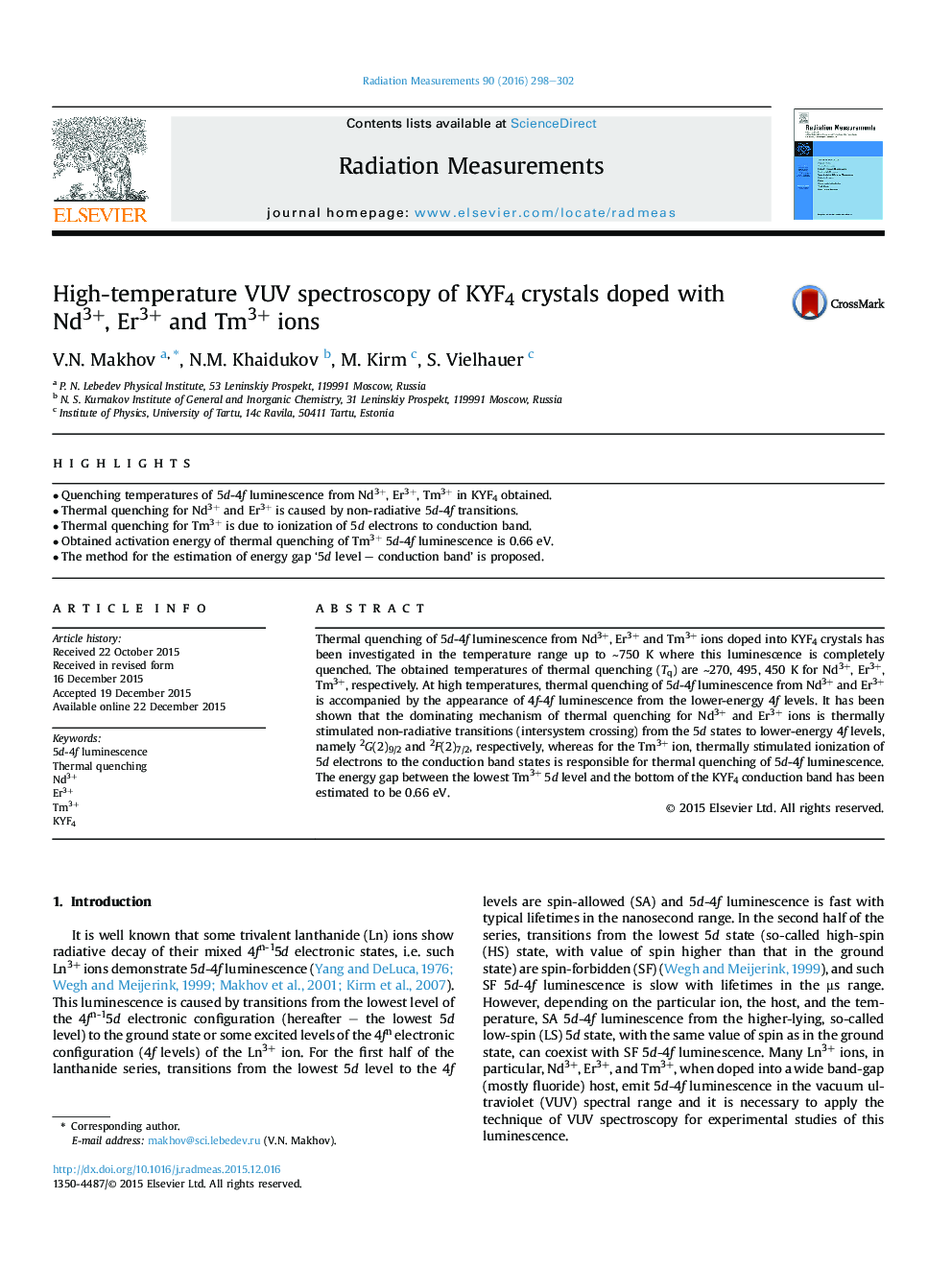| Article ID | Journal | Published Year | Pages | File Type |
|---|---|---|---|---|
| 1888063 | Radiation Measurements | 2016 | 5 Pages |
•Quenching temperatures of 5d-4f luminescence from Nd3+, Er3+, Tm3+ in KYF4 obtained.•Thermal quenching for Nd3+ and Er3+ is caused by non-radiative 5d-4f transitions.•Thermal quenching for Tm3+ is due to ionization of 5d electrons to conduction band.•Obtained activation energy of thermal quenching of Tm3+ 5d-4f luminescence is 0.66 eV.•The method for the estimation of energy gap ‘5d level – conduction band’ is proposed.
Thermal quenching of 5d-4f luminescence from Nd3+, Er3+ and Tm3+ ions doped into KYF4 crystals has been investigated in the temperature range up to ∼750 K where this luminescence is completely quenched. The obtained temperatures of thermal quenching (Tq) are ∼270, 495, 450 K for Nd3+, Er3+, Tm3+, respectively. At high temperatures, thermal quenching of 5d-4f luminescence from Nd3+ and Er3+ is accompanied by the appearance of 4f-4f luminescence from the lower-energy 4f levels. It has been shown that the dominating mechanism of thermal quenching for Nd3+ and Er3+ ions is thermally stimulated non-radiative transitions (intersystem crossing) from the 5d states to lower-energy 4f levels, namely 2G(2)9/2 and 2F(2)7/2, respectively, whereas for the Tm3+ ion, thermally stimulated ionization of 5d electrons to the conduction band states is responsible for thermal quenching of 5d-4f luminescence. The energy gap between the lowest Tm3+ 5d level and the bottom of the KYF4 conduction band has been estimated to be 0.66 eV.
